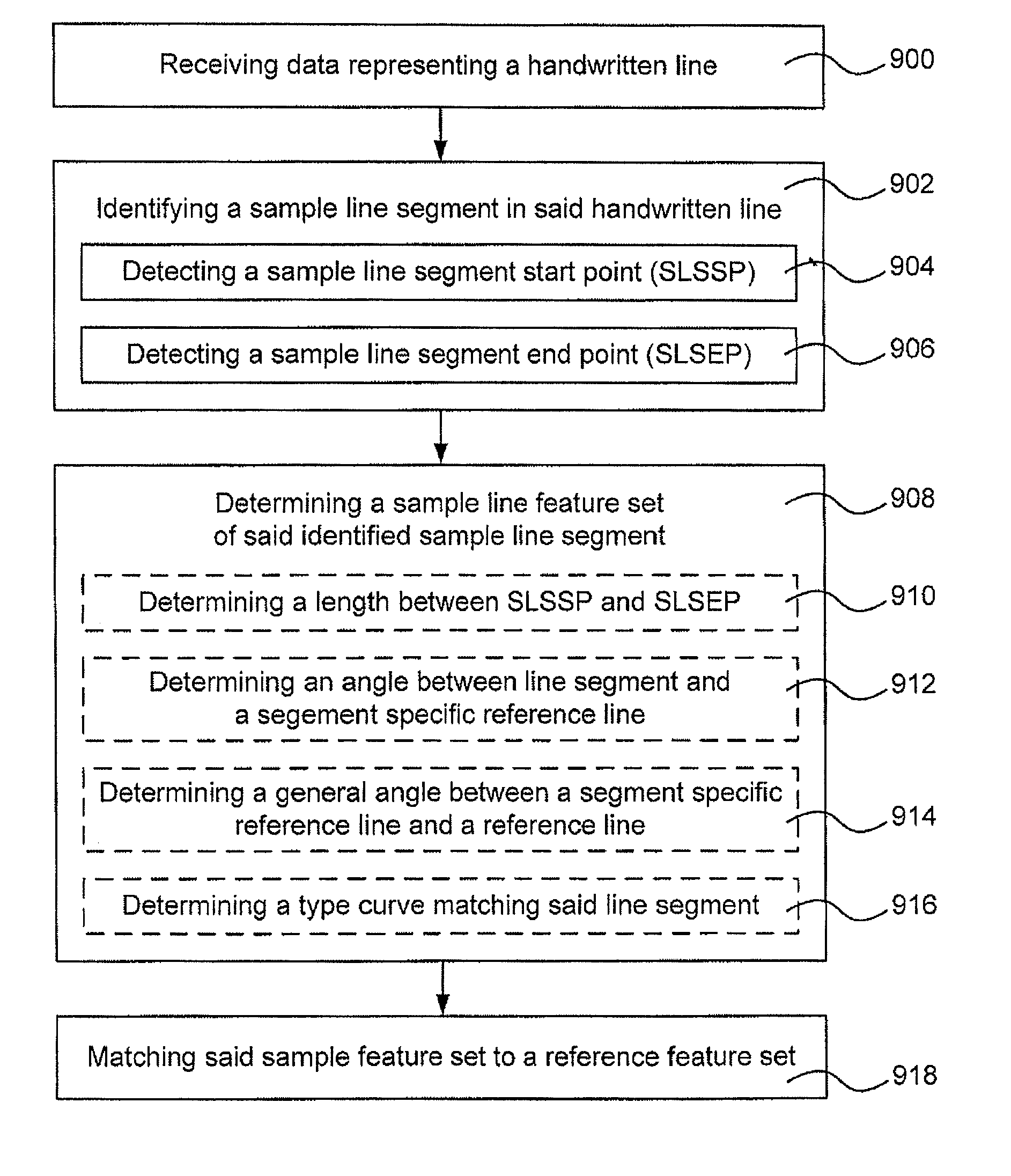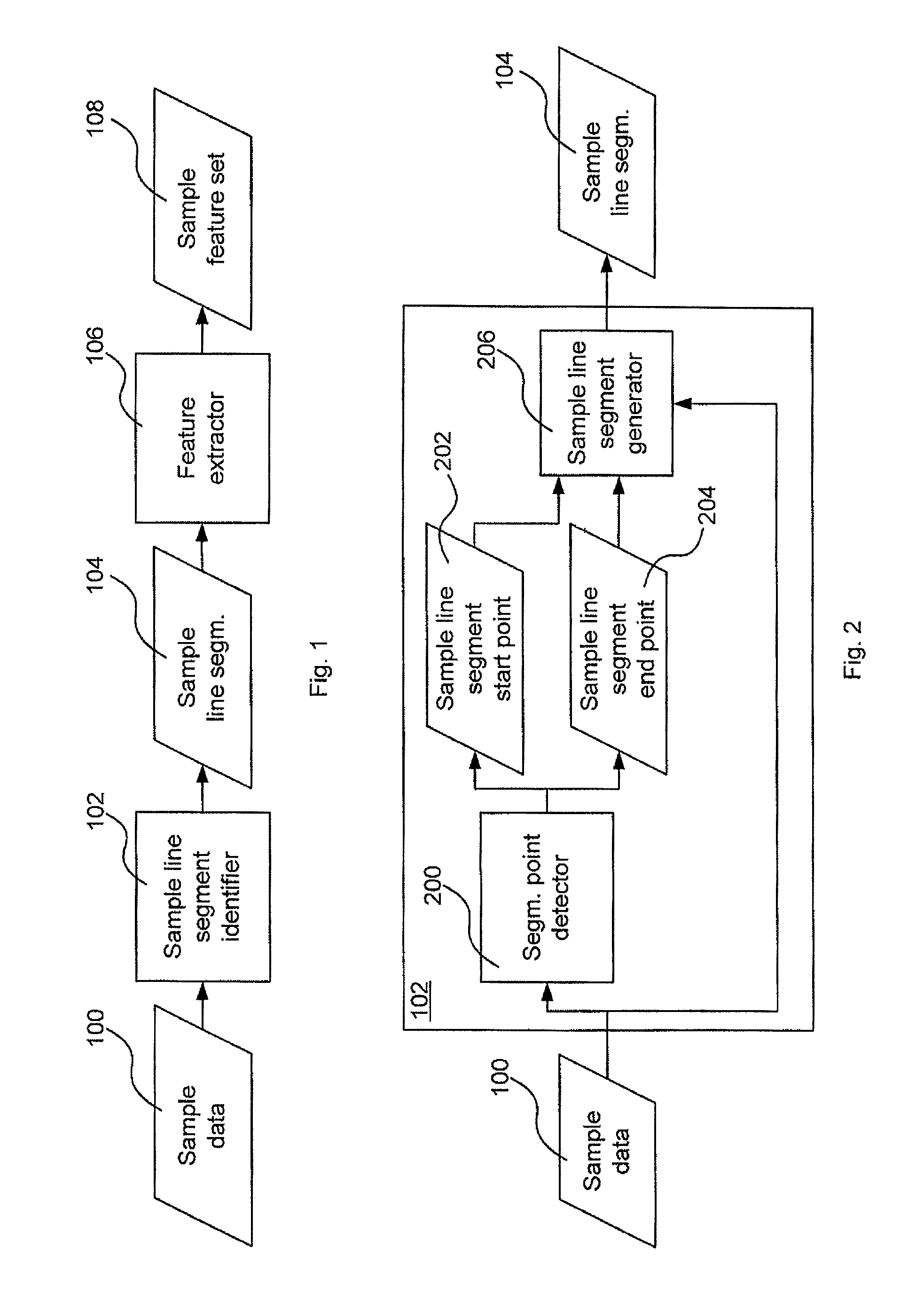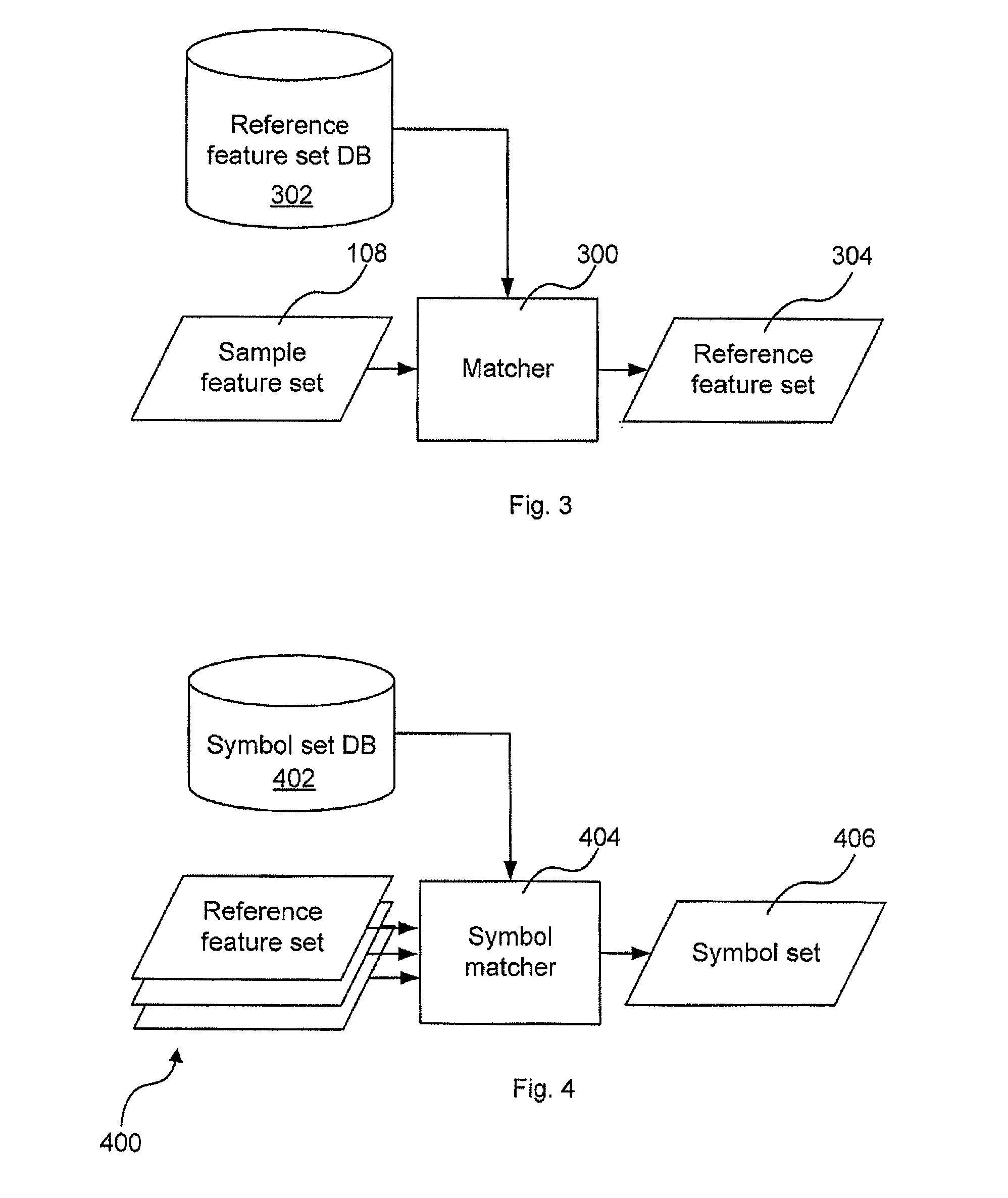Method for character recognition
a character recognition and character technology, applied in the field of character recognition, can solve the problems of large training sets, high computational power, and complex recognition of cursive handwriting, and achieve the effects of reducing the number of characters, reducing the difficulty of character recognition, and improving the accuracy of character recognition
- Summary
- Abstract
- Description
- Claims
- Application Information
AI Technical Summary
Benefits of technology
Problems solved by technology
Method used
Image
Examples
Embodiment Construction
[0083]FIG. 1 illustrates generation of a sample feature set 108 from input sample data 100. The sample data 100 may be any type of digital data representing a handwritten line forming one or several symbols. For instance, the sample data 100 may be consecutive coordinate data input via a touch screen of a personal digital assistant (“PDA”) or a mobile phone.
[0084]The sample data 100 can be input to a sample line segment identifier 102, wherein a sample line segment 104 can be generated based on the sample data 100. A sample line segment identifier 102 is further illustrated in FIG. 2, and an example of the principle is illustrated in FIGS. 6-8.
[0085]Further, the sample line segment 104 can be input to a feature extractor 106, wherein a number of features of the sample line segment may be extracted. Such features may, for instance, be a length, a number of angles and a type curve representing the shape of the sample line segment. These features are further illustrated in FIG. 5. Here...
PUM
 Login to View More
Login to View More Abstract
Description
Claims
Application Information
 Login to View More
Login to View More - R&D
- Intellectual Property
- Life Sciences
- Materials
- Tech Scout
- Unparalleled Data Quality
- Higher Quality Content
- 60% Fewer Hallucinations
Browse by: Latest US Patents, China's latest patents, Technical Efficacy Thesaurus, Application Domain, Technology Topic, Popular Technical Reports.
© 2025 PatSnap. All rights reserved.Legal|Privacy policy|Modern Slavery Act Transparency Statement|Sitemap|About US| Contact US: help@patsnap.com



